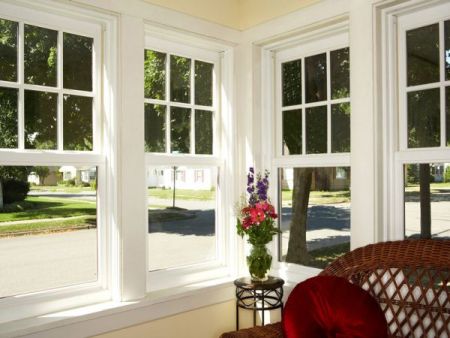Dec 15 2012
Windows are one of the most important features of a home. They contribute to exterior curb appeal, let in light, provide a view and enhance interior ambiance. However, older windows are notorious for losing heat, causing drafts, allowing in noise and having condensation problems throughout the winter. Fortunately, whether you are replacing existing windows or considering window options for a new home, you have the choice of many features that can save on your heating and air-conditioning bills while keeping your home more comfortable.
 Windows Play Significant Role for Sustainable Homes
Windows Play Significant Role for Sustainable Homes
Frame material and window type are often among the first considerations when choosing new windows. Window frames are typically wood, vinyl or fiberglass and each has a range of benefits. Some hollow core frames contain foam insulation to boost energy performance. The way a window opens also affects its energy performance. Fixed windows - ones that do not open - can have the best energy performance as they have no moving parts that leak air. Casement windows that open and close like doors can be closed and firmly latched providing a relatively airtight seal.
Consider triple pane windows instead of the more conventional double panes. They tend to be more common in some of the colder areas of Canada. Their R-value is significantly higher than standard double panes.
Buy windows that use insulating spacers between the panes. Spacers provide an insulating air space between the glass panes in multi-pane windows. If your window has a conductive spacer, such as aluminum, the glass near the spacer will not only lose more heat during the winter, it will more likely have condensation problems that can lead to moisture damage on and around the window and mold growth. Fortunately, insulating spacers are readily available that can cut heat losses around the edge of the windows dramatically.
Beyond keeping the heat in during the winter and out during the summer, high performance energy efficient windows can also perform as solar collectors. By allowing solar energy from the sun into the house during the winter, windows can offset a large part of your home heating bill. The location and size of windows also affects the amount of solar gains your home can capture. More windows on the south side and fewer on the north is the general rule but too many south facing windows can overheat rooms -even in winter. If you are building a new home, consult with a designer knowledgeable in passive solar design strategies.
In Canada, it makes sense to choose windows with a high "solar heat gain coefficient" (SHGC) to maximize solar gains. However, if your house has a good deal of west or east facing windows that cause troublesome high heat gains year round, it may make sense to use windows with low SHGC glass in these locations. An alternative is to provide better exterior shading options such as awnings or shade trees.
Even the most energy efficient windows can have their performance undermined by poor installation. In the past, it was common to find fiberglass stuffed into the gap between the window and the wall. However, compressed fiberglass is not a good insulator and air can still leak through it. Also, if it gets wet, it has a hard time drying out. Spray-in insulating foams can do a much better job of both insulating and air sealing around windows.
As windows are a long-term investment, it can make sense to buy windows with the highest thermal and solar heat gain performance you can afford. This will help protect you against rising home heating and cooling costs over time. Investing in good frames and hardware can also make sense because when, decades down the line, the window seals fail and fog up, you may be able to simply replace the glass units rather than the whole window assembly.
In the coming years, the next generation of highly energy efficient windows may include those with electrochromic films that can be activated with the flick of a switch to provide shade, reduce heat losses and gains or to provide privacy. Researchers are also experimenting with windows that have very high levels of vacuum between the panes to dramatically cut heat loss. The application of see-through, photovoltaic film on windows may one day allow them to produce electricity as well.
High performance windows are one of the main cornerstones of achieving energy efficient housing. By applying different features and design strategies, varying levels of energy efficiency can be achieved to suite any need or budget - from market ready housing through to net zero energy homes. To learn about some of the innovative window features and other sustainable technologies and practices used in highly energy efficient homes across Canada, visit Canada Mortgage and Housing Corporation's website.
For over 65 years, Canada Mortgage and Housing Corporation (CMHC) has been Canada's national housing agency, and a source of objective, reliable housing information.